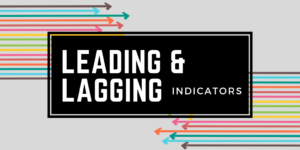The foreign exchange market, also known as forex, is known for its constant movement. However, not all movement is created equal. Sometimes, the market exhibits clear trends, with prices steadily rising or falling. Other times, the market seems stuck in a rut, with prices fluctuating within a relatively narrow range. This lack of clear direction can be frustrating for traders, making it difficult to develop a profitable strategy.
This is where the Choppiness Index (CHOP) comes in. It’s a technical analysis tool designed to help forex traders identify whether the market is trending or ranging. By understanding the Choppiness Index, traders can adjust their strategies accordingly, potentially improving their overall performance.
What is the Choppiness Index?
Developed by Australian commodity trader E.W. Dreiss, the Choppiness Index is a volatility indicator that measures the degree of price directionlessness in a market. It doesn’t predict future price movements, but rather helps traders assess the current market condition – trending or ranging.
The Choppiness Index generates values between 0 and 100. Higher values indicate a choppier market, characterized by frequent price reversals and a lack of clear direction. Conversely, lower values suggest a trending market, where prices are more likely to move in a sustained direction.
How is the Choppiness Index Calculated?
The calculation of the Choppiness Index is relatively straightforward. It involves analyzing the Average True Range (ATR) of an asset over a specific period. The ATR is a technical indicator that measures market volatility by taking the average of the difference between the current high, the previous low, and the absolute difference between the closing price and the previous closing price.
Here’s the formula for the Choppiness Index:
CHOP = (Abs(High – Low) + Abs(High – Previous Close) + Abs(Low – Previous Close)) / (ATR * 2)
- Abs represents the absolute value function.
- High refers to the current high price of the forex pair.
- Low represents the current low price of the forex pair.
- Previous Close refers to the closing price of the previous period.
- ATR represents the Average True Range of the chosen timeframe.
By dividing the sum of the absolute price differences by twice the ATR, the Choppiness Index normalizes the values within the 0-100 range.
Interpreting the Choppiness Index
As mentioned earlier, the interpretation of the Choppiness Index is quite simple:
- Values closer to 100: Indicate a choppy market with high volatility and frequent price reversals. This environment can be challenging for trend-following strategies and may be better suited for range-bound trading tactics.
- Values closer to 0: Suggest a trending market with lower volatility and a more directional price movement. This type of market can be favorable for trend-following strategies that capitalize on sustained price moves.
However, it’s important to remember that the Choppiness Index is not a magic bullet. There are no definitive thresholds for what constitutes a choppy or trending market. Some traders use common Fibonacci retracement levels (38.2 and 61.8) as thresholds, while others define their own based on experience and risk tolerance.
Here are some additional points to consider when interpreting the Choppiness Index:
- Timeframe: The chosen timeframe for calculating the CHOP can influence its reading. Shorter timeframes tend to be more volatile and may produce higher Choppiness Index values, even in a trending market. Conversely, longer timeframes may smooth out short-term fluctuations, potentially providing a clearer picture of the underlying trend.
- Market Context: The Choppiness Index should be used in conjunction with other technical analysis tools and fundamental analysis to gain a more comprehensive understanding of the market. News events, economic data releases, and central bank policies can all impact market volatility and trend direction.
Using the Choppiness Index in Forex Trading
The Choppiness Index can be a valuable tool for forex traders in several ways:
- Identifying Trading Opportunities: By understanding whether the market is trending or ranging, traders can adjust their strategies accordingly. For example, during choppy markets, traders may focus on range-bound strategies like breakout trades or mean reversion strategies. Conversely, trending markets may be better suited for trend-following strategies like moving averages or channel breakouts.
- Risk Management: The Choppiness Index can help traders manage risk by highlighting periods of high volatility. During choppy markets, it might be prudent to reduce position sizes or employ tighter stop-loss orders to limit potential losses.
- Market Confirmation: The Choppiness Index can be used to confirm signals generated by other technical indicators. For instance, if a moving average crossover suggests a bullish trend, but the Choppiness Index is hovering near 100, it might be a sign to wait for further confirmation before entering a long position.
Limitations of the Choppiness Index
While the Choppiness Index can be a helpful tool, it’s important to acknowledge its limitations:
- Lagging Indicator: Like most technical indicators, the Choppiness Index is a lagging indicator. It reacts to past price movements, not predicting future direction. Therefore, it might not always provide timely signals, especially during periods of rapid market changes.
- False Signals: The Choppiness Index can generate false signals, particularly during market transitions from trending to ranging or vice versa. These false signals can lead to unprofitable trades if not combined with other forms of analysis.
- Overreliance: Overreliance on the Choppiness Index can be detrimental. It’s crucial to consider other factors like market sentiment, news events, and support/resistance levels before making trading decisions.
The Choppiness Index is a valuable tool for forex traders seeking to identify the prevailing market condition – trending or ranging. By understanding its calculation, interpretation, and limitations, traders can incorporate it into their trading strategies to potentially improve their decision-making and overall performance. Remember, the Choppiness Index is just one piece of the puzzle. Always combine it with other technical and fundamental analysis techniques for a more comprehensive understanding of the forex market.
By employing the Choppiness Index effectively, forex traders can navigate the ever-changing market landscape with greater confidence and potentially achieve their trading goals.
Let’s Manage Your Forex Funds With Fx Pips Guru!
Fx Pips Guru is a forex fund management company managing client’s funds based on monthly profit share. Let’s do Live Chat with our experts.




